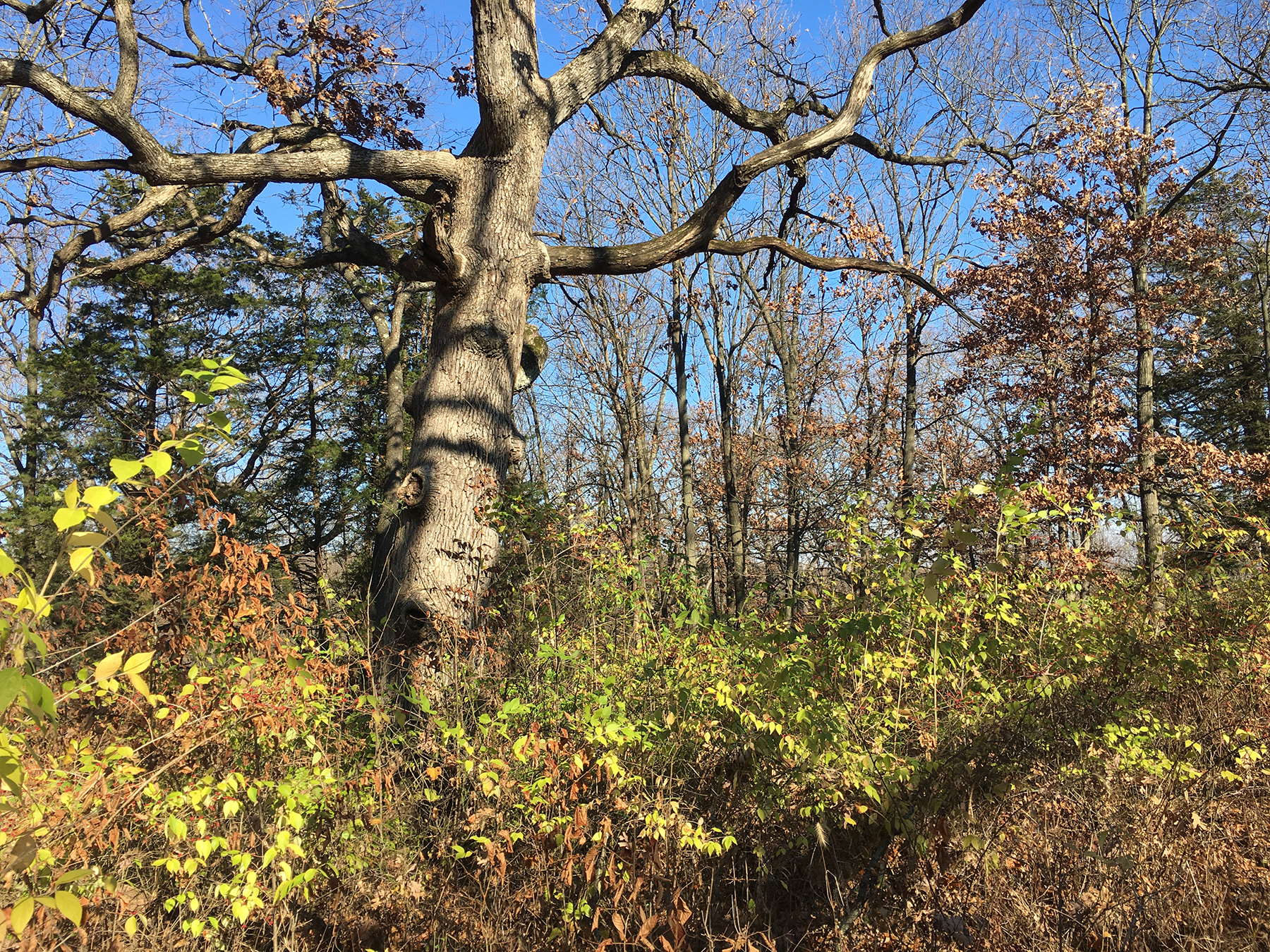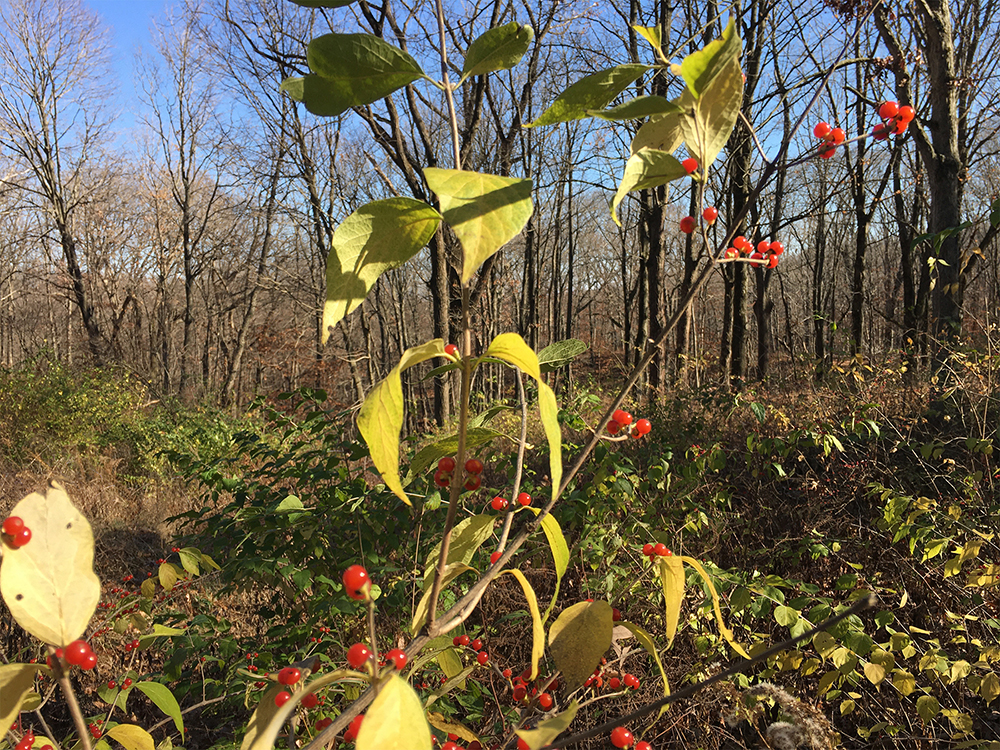
Bush Honeysuckle takes over open woodland habitat at Singing Woods Nature Preserve. (PHOTO BY MIKE MILLER)

MIKE MILLER
Aldo Leopold penned in the Sand County Almanac, “One of the penalties of an ecological education is that one lives alone in a world of wounds. Much of the damage inflicted on land is quite invisible to laymen.” He must have had Bush Honeysuckle in mind when he wrote this. Today, this plant is no longer a curiosity, it has become an invasive species throughout the Midwest, and beyond.
There are several species of invasive honeysuckles (Amur, Tartarian, and Morrow, to name a few). They all have some characteristics in common; opposite leaves, red or orange berries, bushy growth form, and are also one of the first to leaf out in the spring and the last to drop leaves in the fall. There is also an invasive vine species, Japanese Honeysuckle, that is more common in the southern part of the state, but can still be found around here. Beyond their visual similarities, they have another common trait. They were all purposely brought here and planted. State and federal agencies used to encourage the planting of bush honeysuckles as wildlife cover and for erosion control. All to often as a species, we find ourselves regretting our past actions.
Once they get started growing in an area, they can quickly take over the understory, crowding out native trees, shrubs, and wildflowers. They do particularly well in open woodlands, along agricultural field edges, and in woodlands that have had past grazing history. Unfortunately, they are not restricted to locations where they were once planted. Their berries are eaten by birds and carried far away. Migrating flocks of Grackles and European Starlings (another introduced species) are thought to be major carriers of the seeds. The seeds are high in sugars, giving the birds a quick burst of energy. After the sugar-high wears off, the seeds are flushed through the digestive system of the bird, often when they land and roost for the evening. Since Starlings and Grackles roost in large flocks, they can deposit a large amount of seeds in one place. Seeds can lie dormant in the soil for decades and still be viable. This is one of the reasons they are very difficult to control once they are established.
Control measures call for persistence and is a multi-year process. The most common and effective method calls for cutting the bush in the summer through fall and treating the stump with a 25% solution of glyphosate herbicide. This is followed the next year by returning and using a foliar herbicide treatment for any re-sprouts. The area worked will need to be monitored for re-infestations for several years. You can see, this is an intense and time-consuming proposition. Ecologists have to perform a kind of triage system to determine where it makes sense to focus limited resources. Protected natural areas, with high quality open-woodland habitats, that have not been completely over-run with Bush Honeysuckle are prime locations to restore first.
You might wonder “Why bother. If it grows and feeds birds, shouldn’t we leave it be?” That is actually happening in most places. There just aren’t enough resources to go around and eradicate it from everywhere. The answer to the question is another question. “Shouldn’t we save some of our native woodlands and savannas from being taken over by an invasive species?”
As Leopold inferred, an ecological conscience is a double-edged sword. If we have the ability to do the right thing, and save the last vestiges of high-quality habitat for future generations, aren’t we morally obligated to do so? I’ll let you answer that one.

Bush Honeysuckle berries and leaves in mid-November. (PHOTO BY MIKE MILLER)

1 comment for “Nature Rambles | Ecological Conscience”